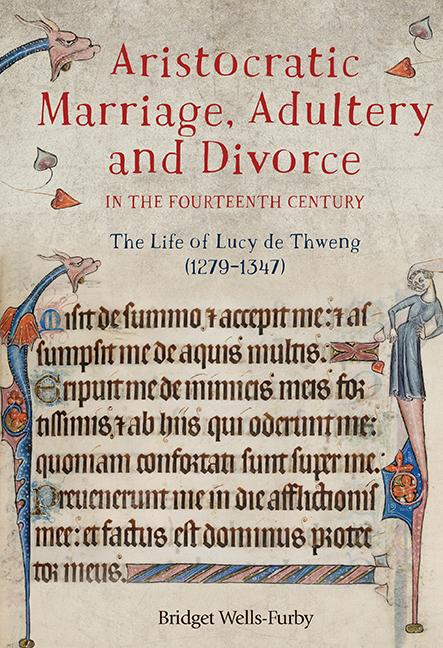 Aristocratic Marriage, Adultery and Divorce in the Fourteenth Century
Aristocratic Marriage, Adultery and Divorce in the Fourteenth Century Book contents
- Frontmatter
- Contents
- List of Illustrations
- Acknowledgements
- List of Abbreviations
- Note on the Text
- Introduction
- Map
- 1 Birth and Family; Inheritance and Disinheritance
- 2 Wardship and First Marriage
- 3 Separation and Divorce
- 4 Adultery and Fornication
- 5 Second Marriage
- 6 Widowhood
- 7 Third Marriage
- 8 Death
- Summary and Conclusions
- Bibliography
- Index
2 - Wardship and First Marriage
Published online by Cambridge University Press: 04 April 2019
- Frontmatter
- Contents
- List of Illustrations
- Acknowledgements
- List of Abbreviations
- Note on the Text
- Introduction
- Map
- 1 Birth and Family; Inheritance and Disinheritance
- 2 Wardship and First Marriage
- 3 Separation and Divorce
- 4 Adultery and Fornication
- 5 Second Marriage
- 6 Widowhood
- 7 Third Marriage
- 8 Death
- Summary and Conclusions
- Bibliography
- Index
Summary
At the age of six or younger, Lucy inherited the manors of Danby, Brotton, Skinningrove, Yarm and Kirkburn (Yorks.), and Bozeat (Northants.), which were thought to be worth at least £241 13s. 8½d. a year, and were probably worth rather more. The Yorkshire lands were held in chief so custody of them during her minority, and the right to award her marriage, belonged to the king, Edward I. This was one of the occasions when secular rights conflicted very obviously with the church's view of the primacy of consent in making a marriage.
The implications of the marriages of minor heirs differed according to whether the heir was male or female. A royal grant of the marriage of a minor male heir offered a father the opportunity to marry off a daughter without paying a cash portion, although very often these were bought and sold and in these cases the difference was immaterial. The marriage of a minor heiress was far more significant because of the land she brought with her. The official attitude to these young girls is displayed in the terminology of administrative records. This was simply commercial and there is little or no indication that they were considered as persons in their own right. The inquisition after the death of Roger de Merlay concluded that the heirs were Merlay's three daughters, aged twenty-four, ten and eight, and that the eldest and the youngest were married before their father's death, the former to William de Greystoke and the latter to ‘the son and heir of Marmaduke de Thweng’. Of the five young persons concerned, only Greystoke is actually named. The important points were that one daughter was of full age and her one-third of the estate would pass to her husband, Greystoke, who would take possession in the usual way. The king would have custody of the other two-thirds of the estate because the other two daughters were minors, but he would have the marriage of only one of them because the other was already married.
- Type
- Chapter
- Information
- Aristocratic Marriage, Adultery and Divorce in the Fourteenth CenturyThe Life of Lucy de Thweng (1279–1347), pp. 21 - 32Publisher: Boydell & BrewerPrint publication year: 2019
